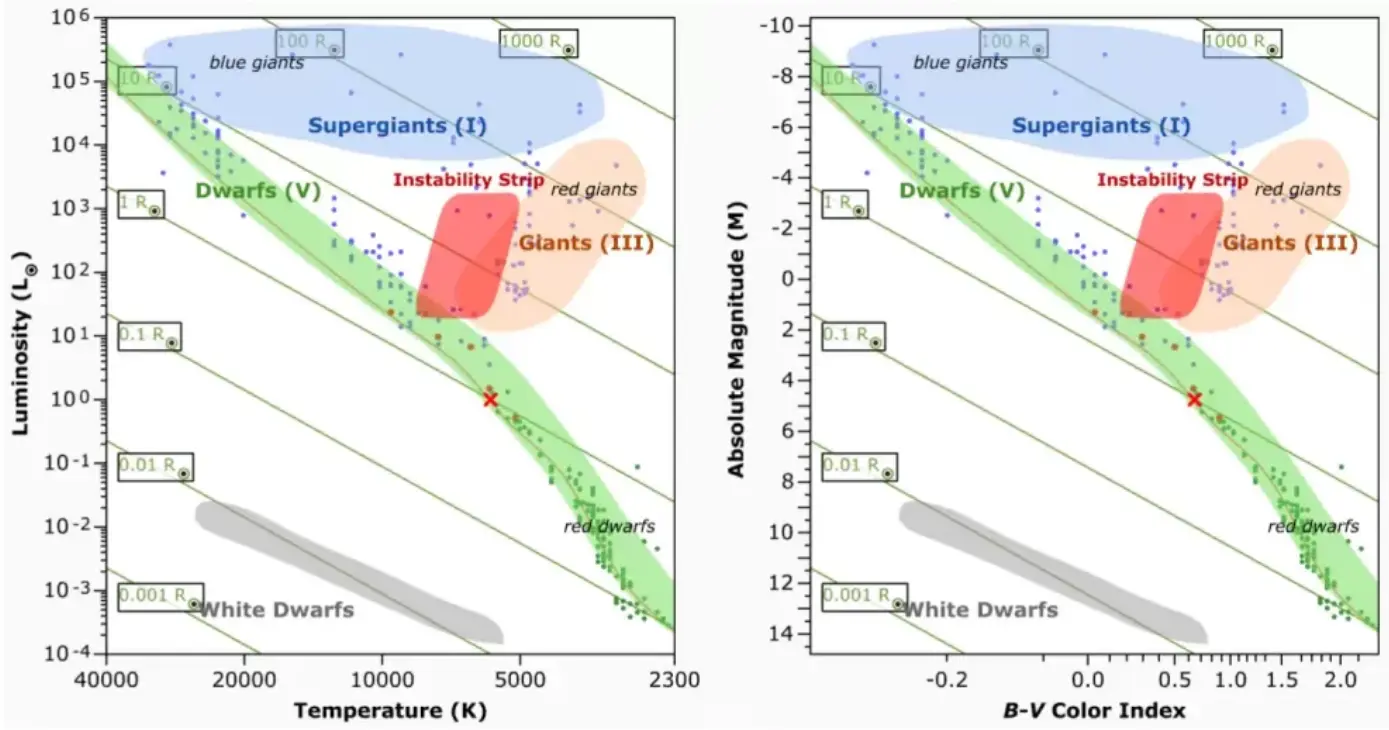HR diagram
HR (Hertzsprung-Russell) diagram relates the luminosity $L$ and the effective surface temperature $T$ of stars. These two quantities are linked to the radius $R$ of a star via the equation of flux, $\mathscr{F}=\sigma T^4=L/(4\pi R^2)$, meaning
$$ R = \frac{\sqrt{L}}{\sqrt{4\pi\sigma}T^2} = \frac{\sqrt{L/L_\odot}}{(T/T_\odot)^2} \ R_\odot $$
where $L_\odot$, $T_\odot$ and $R_\odot$ are the luminosity, temperature and radius of the sun. This means there are diagonal constant-radius lines in the HR diagram. An HR diagram can be shown using either $T$-$L$ or the corresponding observable quantities color index and absolute magnitude. Both temperature-luminosity and color-magnitude versions are shown below [clicking the image will open the corresponding applet of NAAP Labs].
B-V color index is the difference between apparent magnitudes in the blue and visual or yellow bands, i. e. $m_B-m_V$. The absolute magnitude on the $y$-axis is the yellow magnitude $M_V$. A negative B-V index means $m_B<m_V$ and, hence, the brightness in blue wavelengths is greater than in the visual band. Note that $M_V\propto - \log L$ and $(m_B-m_V)\propto -\log T$ which will be evident if you compare the axes of the two panels.
The green patch in the HR diagram is the main sequence where a star stays during its stable period. Before the birth a star is to the lower right hand side of the main sequence. When the equilibrium of the star is broken, it moves to the upper right hand side of the main sequence toward the giant (light red) or supergiant (blue) branches. After death stars move to the lower left hand side of the main sequence near the white dwarf patch (grey). Some massive stars oscillate periodically and they are found in the instability strip (dark red). On the main sequence the heavier stars are found in the upper part, and vice versa.
HR diagrams have been such fantastic infographics in astrophysics that their creators Hertzsprung and Russell have been called the Minards of astronomy, where Minard is the French engineer who became famous by drawing the most influential flow-map of the 1812 Ruassian campaign of Napoleon in 1869.1)
The life of a star becomes truly alive in an HR diagram. Star in a Box allows one to see the track of a star on the HR diagram from the moment it begins to die until its final burial as a white dwarf, neutron star or black hole. In the video above, we show the track of a sunlike star as it leaves the main sequence.
